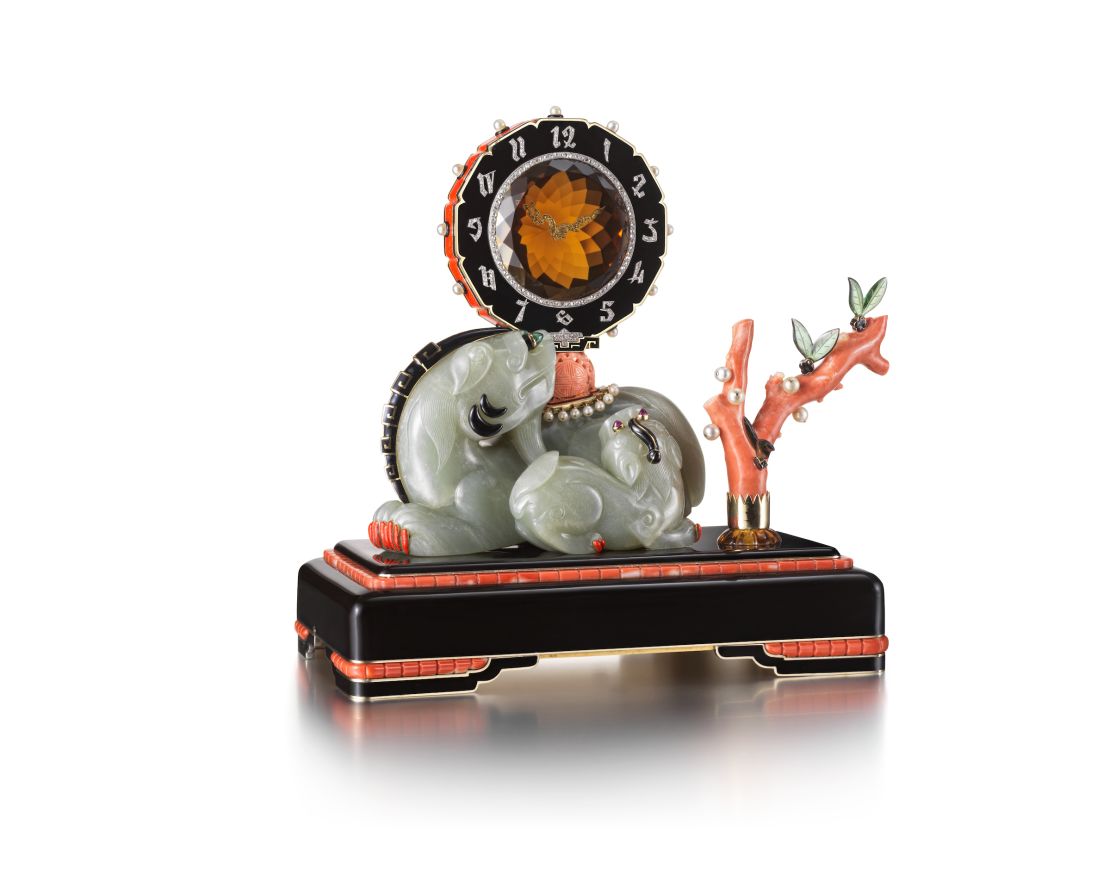This year, Beijing’s Palace Museum – a vast, architectural complex that 24 Chinese emperors called home over 500 years – will hosting a somewhat unexpected exhibition. Running until July 2 is a one-off show dedicated to Chaumet, the prestigious Paris jewelry house once patronized by Napoleon Bonaparte.
Titled “Imperial Splendours: The Art of Jewellery since the 18th Century,” the Beijing show is a journey through Chaumet’s nearly 240-year history, told through some 300 works, jewels, paintings, drawings and objets d’art.
Set in the tower of the museum’s Wumen Gate, where emperors once announced the following year’s almanac, the show features not only works from Chaumet’s archives, but also from the Louvre, London’s Victoria and Albert Museum, the Palace Museum among others.
The exhibition is a rare opportunity to see pieces that have never been shown in public, and many that have never left France, such as Napoleon’s impressive gem-set golden coronation sword, which was co-created by Chaumet founder Marie-étienne Nitot in 1802.
Read: Why Chinese ceramics sell for millions
Other highlights include a sumptuous 1813 gold, pearl and onyx medieval-style belt worn by Empress Marie-Louise with her day parure: a gold-and-blue suite comprising a hair jewel, a necklace, bracelets and earrings.

Complementing these French designs are the Palace Museum’s imperial gems, including two Qing dynasty pieces: a vibrant kingfisher feather headdress, and a double-dragon hair pin set in silver, pearls, coral and glass. Continuing the dialogue is Chaumet’s diamond and platinum brooch with a jade Chinese junk motif from the art deco era, when chinoiserie was all the rage.
Tiaras also feature heavily. Chaumet’s has, after all, produced more than 2,000 tiaras to date. A 1811 wheat-motif design kicks off what will be a recurring theme for the house. A 1914 aigrette with a central emerald brings the headpiece into more modern times, but it’s a 2017 diadem, created by a jewelry student from London’s Central Saint Martins by way of a design competition, that suggests where the beloved tiara is headed.
East meets West
Over in Paris, the Asian – and imperial – theme continues, courtesy of From the “From the Great Mughals to the Maharajas: Jewels from the Al Thani Collection,” on now at the Grand Palais. Featuring 250 Indian and Indian-inspired gems from the Al Thani Collection, a private collection owned by Sheikh Hamad bin Abdullah Al Thani, the pieces date back over 400 years.
Read: The intrigue and artistry of secret watches
The legendary Agra pink diamond will appeal to purists. It was supposedly acquired by the first Mughal emperor, Babur, in 1526, before being smuggled to England some 330 years later. Meanwhile, Cartier was among the many western houses greatly inspired by Indian culture, here exemplified by a fantastic 1928 diamond and ruby necklace that’s topped off with a whopping 234.65-carat yellow diamond.
Art deco revisited

The Jazz Age was marked by immense social change and liberation, which for jewelry meant bold, rakish designs that reflected the women who wore them. This summer, “Jeweled Splendors of the Art Deco Era: The Prince and Princess Sadruddin Aga Khan Collection” at New York’s Cooper Hewitt, Smithsonian Design Museum celebrates the era with a show of over 100 luxury objects – mainly vanity cases, but also clocks and watches – gifted by Prince Sadruddin Aga Khan to his wife Catherine.
The pieces, which date from 1910 to 1938 and hail from venerable maisons, including Boucheron and Bulgari, are top examples of the decorative codes that defined the times, from fascination with the exotic to strong, geometric forms.
Read: Why ivory antiques are so controversial
And finally, those unable to make the above shows before closing day will be relieved to hear that Amrapali, one of India’s largest contemporary jewelers, has this month unveiled a new museum in India’s gem capital, Jaipur.
The museum is a true labor of love for Amrapali’s founders, Rajiv Arora and Rajesh Ajmera. As history graduates in the 1980s, the pair embarked on a journey to discover their country, amassing not only art objects, but the inspiration to create a contemporary jewelery brand. Now the 3,000 pieces come under one roof in an annex to its corporate headquarters, and is a one-of-a-kind showcase of India’s gold and silversmithing heritage.
“Imperial Splendours: The Art of Jewellery since the 18th Century” is on until July 2, 2017 at the Palace Museum in Beijing.
“From the Great Mughals to the Maharajas: Jewels from the Al Thani Collection” is on until June 5 at the Grand Palais in Paris.
“Jeweled Splendors of the Art Deco Era: The Prince and Princess Sadruddin Aga Khan Collection” is on until August 27, 2017 at the Cooper Hewitt, Smithsonian Design Museum in New York.















